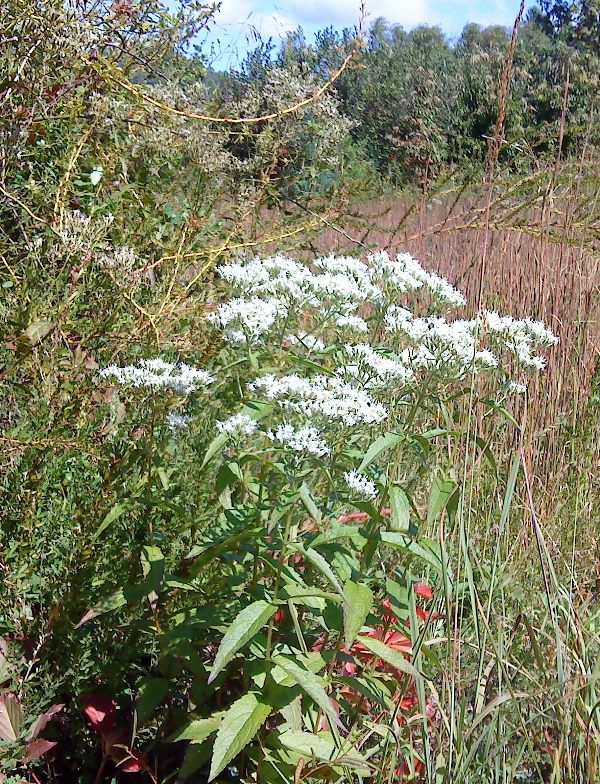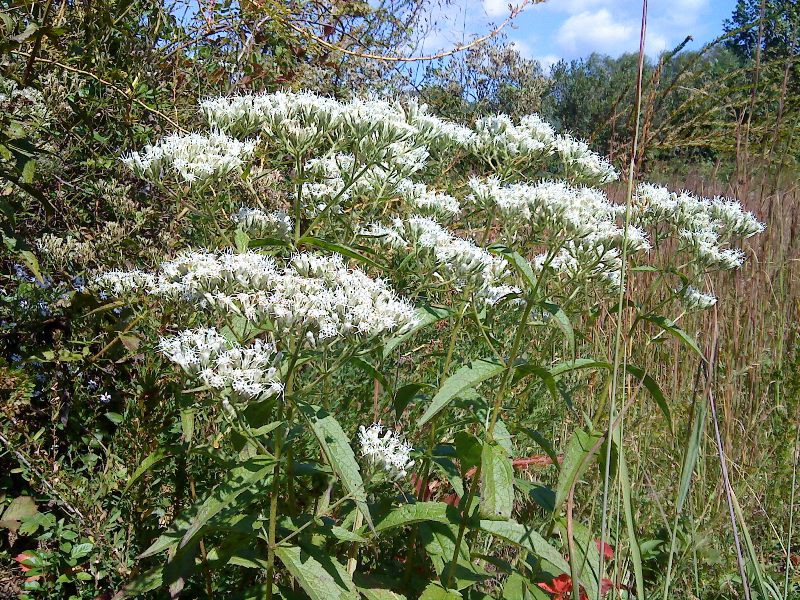Eupatorium fernaldii
NOTE: Eupatorium fernaldii has been previously recognized as part of E. album var. vaseyi, but molecular data show that, like E. vaseyi, it is a hybrid-derived apomict that involves E. petaloideum rather than E. album as one of its parents; in contrast to E. vaseyi molecular data show that it has an additional progenitor, E. perfoliatum. Thus it is of trihybrid origin.
Distinguishing Features: like other members of the Eupatorium album complex, the involucral bracts are white in color, but in E. fernaldii they all have glands for most of their length; the leaves average more than 80 mm long, and have pinnate venation; pollen is malformed or completely lacking. The major morphological feature to distinguish E. fernaldii from E. vaseyi is the greater abundance of leaf glands in E. fernaldii. It also occurs in more open areas such as old fields rather than in woodlands.
Habitat: open fields.
Geographic Distribution: occurs primarily in the Piedmont region to the east of the southern Appalachians.
Similar Species: Eupatorium petaloideum has more attenuate involucral bracts that completely lack glands and shorter leaves; Eupatorium album has leaves that have more glands, but its inner involucral bracts have fewer glands - both species produce normal pollen.
Molecular Data : samples of E. fernaldii have ITS sequences with a pattern of indel and bp polymorphisms that would be produced by a combination of E. petaloideum, E. sessilifolium, and E. perfoliatum.
Images

